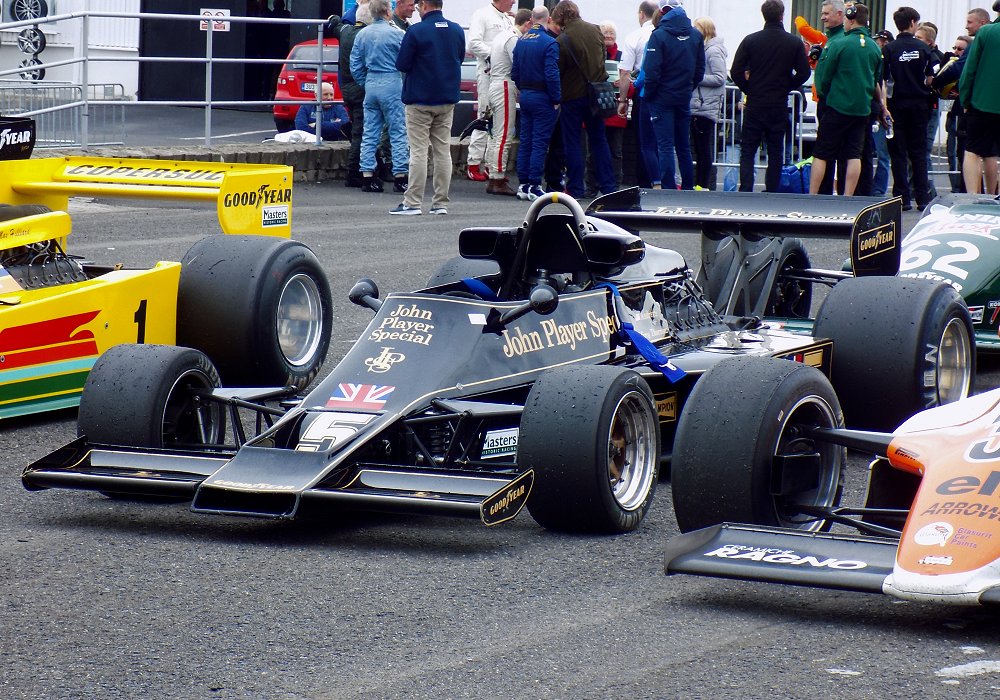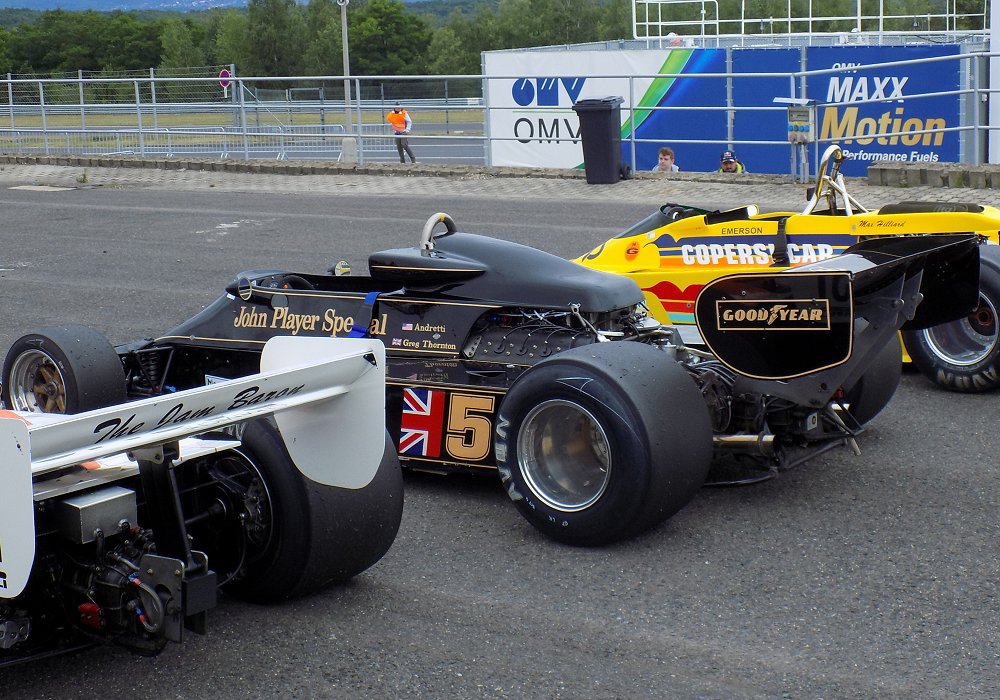Description
The Lotus 77, introduced for the 1976 Formula One season, was a crucial transitional car for Team Lotus — the machine that bridged the gap between the difficult mid-1970s period and the aerodynamic revolution that was about to come with the Lotus 78 and 79. Known internally as the John Player Special Mark II, the 77 was Lotus’s attempt to return to competitiveness after several disappointing seasons. Although not an outright race winner in every situation, it proved to be a flexible, technically interesting design and ultimately delivered a symbolic and important victory with Mario Andretti.
The Lotus 77 was designed by Ralph Bellamy with input from Tony Southgate and an increasingly influential Peter Wright. Chapman’s requirements for the new car centred on adjustability, low drag, and weight-saving. As a result, the car became known as the fully adjustable Lotus, featuring a chassis that allowed for a wide range of suspension configurations. The idea was to let the team adapt the car to different circuit characteristics by altering geometry, weight distribution, and roll stiffness more easily than on earlier designs.
The chassis was a conventional riveted aluminium monocoque, narrower than its predecessor and designed for improved airflow around the cockpit. The sidepods were slim, and the radiators were positioned to reduce drag while maintaining cooling efficiency. The car had a long, low nose and tidy bodywork, visually more refined than the uneven Lotus 76 and far slimmer than the bulky Lotus 72 derivatives that preceded it.
Power came from the proven Ford-Cosworth DFV 3.0-litre V8, producing around 485 horsepower. By 1976 the DFV was well understood by Lotus, reliable, and capable of competitive performance when paired with a clean aerodynamic package. A five-speed Hewland FG400 gearbox transmitted power to the rear wheels. While the engine itself was no longer a unique advantage — nearly all front-running teams used the DFV — Lotus’s ability to exploit lightness and low drag remained a point of difference.
Suspension engineering was the defining feature of the Lotus 77. It used anti-dive geometry at the front and anti-squat at the rear, part of Chapman’s ongoing experimentation with controlling pitch under braking and acceleration. These features theoretically allowed the car to maintain better aero balance and braking stability, but in practice they proved difficult to perfect. Drivers complained that the car could feel nervous over bumps and unpredictable in longer corners.
Steering was precise, and when the setup was correct the car could be extremely quick — but the challenge for mechanics and drivers was finding that narrow window in which the 77 behaved optimally. Mario Andretti, with his deep technical understanding, played a crucial role in developing the car throughout the year. Gunnar Nilsson and Ronnie Peterson also contributed to testing before Peterson left for March.
Early in the season the 77 struggled. It lacked the structural sophistication of the Ferrari 312T2 and the brute power of the Brabham-Alfa Romeo. However, as the team learned how to unlock the chassis through careful setup, performance steadily improved. Andretti scored a podium at Zolder and several competitive finishes over the summer. By the late European races, the 77 had become a genuinely effective car.
Its greatest moment came at the 1976 Japanese Grand Prix at Fuji. In torrential, chaotic conditions, Andretti drove a superb, measured race while championship rivals James Hunt and Niki Lauda fought their own dramas. The Lotus 77 excelled in the low-drag, wet-surface environment, and Andretti claimed a brilliant and overdue victory — Lotus’s first since 1974. It was a fitting end to the car’s career and confirmation that Lotus’s engineering instincts were once again aligned with future success.
Visually, the 77 carried the iconic black-and-gold John Player Special livery, giving it one of the most striking appearances on the 1976 grid. Its slimness, clean lines, and professionalism marked a return to form after the difficult experimental period of the 1974–75 cars.
In historical terms, the Lotus 77 is remembered less for its raw results and more for its strategic importance. It marked Lotus’s climb back toward the front of Formula One after two troubled seasons. Crucially, work on the 77 fed directly into the development of the Lotus 78 “wing car,” where Wright and Chapman fully understood how to exploit underbody aerodynamics — and that discovery would change Formula One forever.
Today, the Lotus 77 stands as the car that restarted the momentum at Hethel. It was not perfect, but it was clever, adaptable, and in the right hands capable of strong performances. Most importantly, it paved the way for the ground-effect Lotus 78 and world-beating Lotus 79 — two of the most influential designs in Formula One history.


